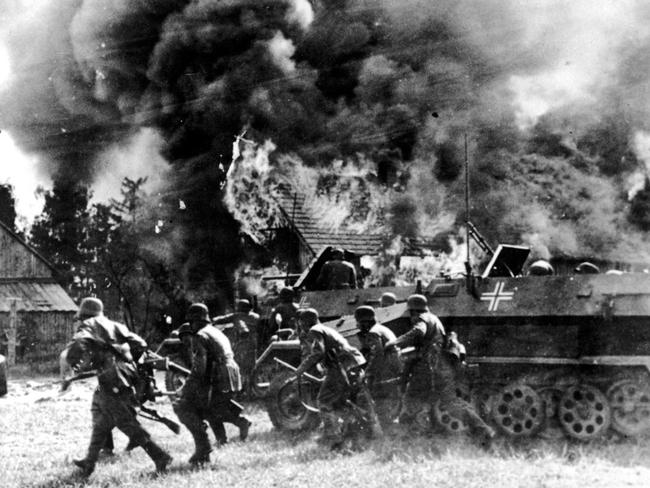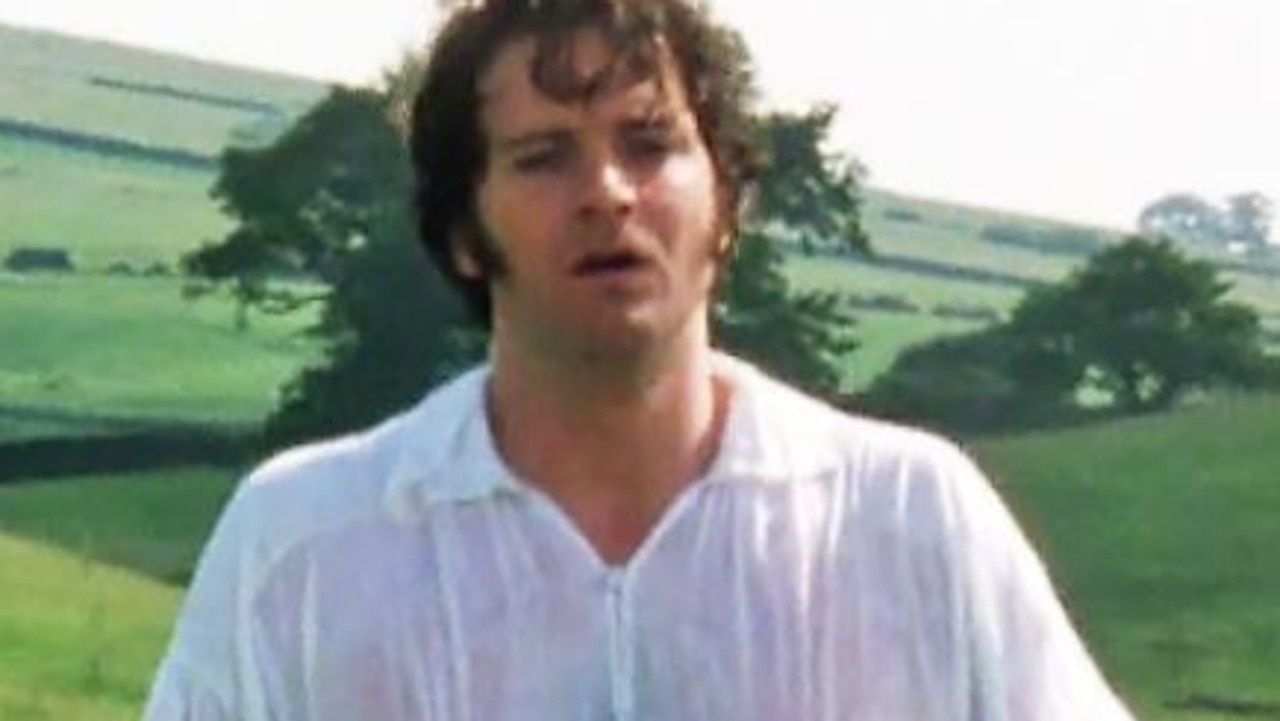How to tell war stories to children, by We Are Wolves author Katrina Nannestad
Like it or not, lots of kids love playing soldiers, watching war films and hearing accounts of battle. This is how to navigate that sensitive topic.

Books
Don't miss out on the headlines from Books. Followed categories will be added to My News.
Why is WWII such a popular backdrop for stories — and how do you make such confronting events suitable for younger readers? KATRINA NANNESTAD, whose latest novel We Are Wolves follows three German siblings forced to flee the advancing Russian Army, explains.
My early reading habits were not impressive. I preferred comics and TV shows to books, and in early high school, a burgeoning interest in boys led me to dabble in romance novels of dubious quality. But somewhere along the way, my father handed me a novel that changed the course of my reading life. It was Mila 18 by Leon Uris – a story about the Warsaw ghetto uprising of 1943. I found this book terrifying, challenging and intriguing, and I wanted more. The dodgy romances were abandoned.
Over the years, war novels have continued to fill a good portion of my reading hours. I like that I learn something new – especially the diverse ways in which people demonstrate courage, generosity and love. And World War II feels recent enough to relate to my own modern life. I read about normal lives being turned upside down, and I cannot help making personal connections. What if my sons were sent off to kill other people’s sons? How would I cope without a home or a safe food supply? To what lengths would I go to oppose a wicked regime, or to protect an innocent stranger? Would I be a leader or a follower?

I’m not alone in my fascination. War novels continue to be written and read with great interest by adults the world over. And by children.
Yes, children love reading war novels. So how do we present these tragic stories in a way that is accessible to young readers?
A historical novel is set at a real point in history, but the characters and plot are fiction. Certainly, young readers can learn much from the factual details that are wrapped up in these stories, but the purpose is not to provide a blow-by-blow recording of the historical events of that time. The writer has the power to choose what goes in the novel and what stays out. A well-crafted story will honour the people who lived through these terrible times, while avoiding those details that we do not want children exposed to.
Telling the story from a child’s point of view is a wonderful tool. This enables the author to limit the story to only those things the child at the centre of the novel sees or experiences.

There might be something terrible going on in the streets outside, but if the protagonist is in bed, snuggled beneath the quilt, they cannot see. There may be hints about what is happening. A more mature reader will have the knowledge and reading experience to infer what is happening. A younger reader will take the description at face value and simply huddle beneath the quilt with the protagonist.
Joy, whimsy and humour are not words we automatically associate with war novels, but in the world of children’s fiction, they are critical. Characters can be given quirks that scatter happiness and humour throughout a story – a baby sister who rubs food into her hair, a brother who makes up rude ditties about Hitler, a musician who brings beautiful music to a dark place, a faithful horse who won’t be left behind.
Likewise, familiar childhood routines and events can provide relief from the ongoing drama. School lessons, birthdays, games, family dinners, bedtime stories are changed by war, but can provide softer, safer ways for children to make a personal connection with a story. What if my school simply closed one day? What would Christmas be like with no presents? How long could I stand to go without a bath?
And finally, a good children’s story will find the light amidst the tragedy. Even though war novels are heartbreaking, they can also tell of wonderful people who shine with those qualities we want to instil in our children – resilience, kindness, forgiveness and love.
But perhaps the best we can do is to read these stories with our children. Share the journey. Talk about the characters, the world-changing events and the big ideas. By being involved in our children’s reading experiences, we can help them learn from history and literature, and ensure they find hope and joy in the stories they read.

KATRINA’S PICKS: WAR BOOKS FOR YOUNGER READERS
Katrina Nannestad is an award-winning Australian author.
Her new novel, We Are Wolves, follows three siblings forced to flee their home following the Russian Army invasion into East Prussia at the end of World War Two. It is aimed at children from 10 years up and is available now.
These are her recommendations for other war books suitable for young readers.
Once by Morris Gleitzman
This holocaust story is a surprising blend of tragedy, humour and hope.
The Midnight Zoo by Sonya Hartnett
This story of three orphaned Roma children has many layers and every sentence is a poem. A beautiful book to read out loud.
An Elephant in the Garden by Michael Morpurgo
Marlene, an elephant rescued from Dresden Zoo, provides charm, lightness and a fresh angle to this serious war story.
Hitler’s Daughter by Jackie French
This novel poses big questions about identity, family, responsibility, innocence and guilt.
The Butter Battle Book by Dr Seuss
Although this picture book is really about the Cold War arms race, it provides a great starting point for talking about intolerance, conflict and war.
Note: Adults should always be aware of the content of the books they are offering to young readers. War books, by nature, will contain elements that children may find overwhelming.

FOR THE ADULTS: BOOK OF THE MONTH
The Betrayals by Bridget Collins, published by HarperCollins Australia, is our Book Of The Month. Go to Booktopia and enter code BETRAYALS at checkout to receive 30 per cent off the RRP of $32.99. And share your stories and recommendations at the Sunday Book Club group on Facebook.
Originally published as How to tell war stories to children, by We Are Wolves author Katrina Nannestad


